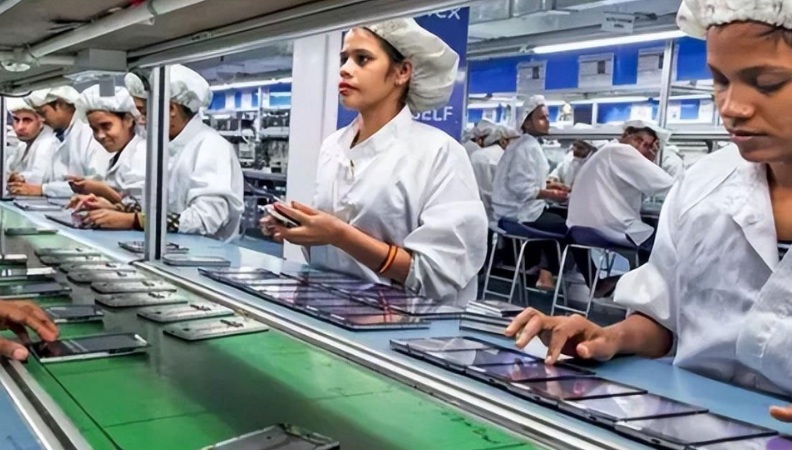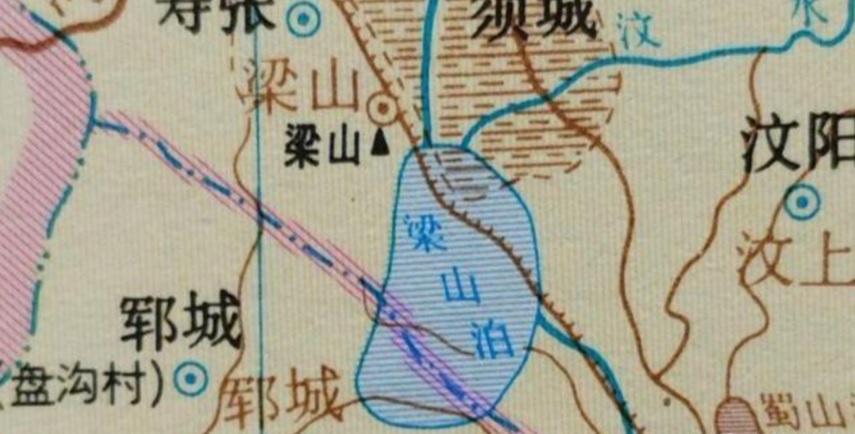India has become the largest supplier of phones to the US [15], accounting for 44% of the market share in Q2 this year. Vietnam ranks second (30%), and China third (25%). In just a few years, India managed to handle iPhone production. Does this prove electronics assembly has no barriers and is purely a cheap labor industry? Will we gradually be kicked out of the industrial chain system?
Comment 1:
Laughing at Indian workers’ low quality, illiteracy, and laziness, claiming they can’t replace China? Don’t forget – this was the exact evaluation given to mainland Chinese workers by Hong Kong/Taiwan and foreign investors when factories opened 40 years ago.
- I am only citing real historical evaluations. I’m not hyping India. Don’t get triggered or call me a “Taiwanese colonial dog” – that’s ridiculous [tears of laughter].
- According to the third census, China’s illiteracy rate was 23.5% in 1982. And you claim factory workers/laborers back then were nearly 100% literate? Including migrant workers? Impossible! Everyone knows early-reform China was dirt poor – this isn’t some secret. End of discussion – nationalists can “win” if it makes you happy [love].)*
Reply 1.1: Many don’t realize “Made in China” meant counterfeit and shoddy goods 20 years ago.
Reply 1.2: Couldn’t agree more. Those who can invest in India should hurry – surpassing China is imminent. As for me? I’ll just scrape by on welfare in China [surprise].
Reply 1.3: It’s low-skilled work relying on cheap labor. Did you really think it’s irreplaceable? [facepalm]
Reply 1.4: China only resumed college entrance exams a few years before 1982!
Reply 1.5: You said “40 years ago” – what was India doing then? Still in primitive society?
Comment 2:
Still dare to overestimate “our irreplaceability”?
- NVIDIA announced its exit from China in 2023, then its stock soared, becoming the world’s first $4 trillion tech company (2023/10/27).
- Logitech moved most production to South America/Southeast Asia, retaining only 10% in China.
- Starbucks seeks buyers – its intent to leave China is obvious.
- Philips, Panasonic, Nikon, Suzuki, Mitsubishi, Ricoh, Toshiba, Google, Carrefour, Nippon Steel, Sony, Tesco UK, Yahoo, Rakuten, Microsoft, ADM, Li Ka-shing…
Remember when rice-distributing system workers proudly declared: “Without China, your shelves would be empty! Without Dragon Country manufacturing, the world economy freezes! Foreigners must embrace our rise!”
When Apple first moved production to India, we mocked Indian education, caste, everything – confidently sneering “India? You think just because China did it, anyone can?”
Turns out… anyone can make iPhones. Foxconn went to India → India could. Foxconn went to Vietnam → Vietnam could… How much of our “confidence” was actually held by foreign capital?
How vital is foreign capital? - 22.5% of China’s industrial output
- 28.3% of industrial profits
- 16% of tax revenue
- 38.7% of foreign trade
- 20.7% of R&D investment
Not to mention nearly all “high-quality” domestic jobs are at foreign firms.
We’re galloping toward a cliff – what’s vanishing isn’t dust, but our lifeline.
Reply 2.1: Was mocking India wrong? Its caste system is unequal! Example: Non-Delhi Indians face ≥2 security checks entering Delhi. They work there but get no welfare. Delhi’s college entry scores are lower. Vehicles can’t enter central Delhi even with permits [angry].
Reply 2.1.1: Is this “India” north of the Himalayas? [angry]
Reply 2.1.2: You mean the Delhi that sang “Welcome to Delhi” in 2008? [laugh]
Reply 2.1.3: Modi: Don’t you have your own names? [tears of laughter]
Reply 2.2: Foreign brands left for varied reasons: - Lotte Korea: Victim of THAAD deployment (K-dramas sacrificed too).
- Samsung: NOTE7 discrimination + Chinese phone brands rising.
- Philips: Just licenses brands now.
- Japanese appliance brands? Embarrassing – Chinese brands occupy 1/3 of Japan’s market.
- Mitsubishi: Zero EV investment. Sells only old models (a few thousand/year in China). Who’d open a dealership?
- Starbucks: Lost to Luckin/tea brands. Also clueless about Chinese habits: Chinese prefer sitting for meals, walking with drinks, office coffee – not café-sitting. Many offices now have coffee machines.
(Add more if you know!)
Reply 2.3: Foreign capital left, yet China didn’t collapse and keeps developing. Doesn’t that mean it’s less important than you think? [smirk]
Reply 2.4: Current problems (especially unemployment!) are real. But many foreign brands you listed failed in the market! Separate facts from emotions!
Reply 2.5: Most companies you named lost in the market.
Reply 2.6: What? NVIDIA left China? Who visited China just days ago?
Comment 3:
Frankly, I never understood what the nationalists were “winning.” Today’s India resembles past China: local factions, low worker quality, poor infrastructure, key part imports… Calling past China a “bigger India” is accurate. We later took on electronics assembly, learned to make parts, built phone supply chains. India is retracing our steps. Until 2015, power outages were common even in Shandong (major industrial province). Local gangs/thugs were everywhere – “Northeast’s Qiao Si” became legend. Guangdong nearly issued its own currency! Proof of fragmented power. Worker quality? PS4 assembly in Suzhou: workers spat into consoles (blame low wages). Chemical industry safety videos show endless absurdities – smoking near oil tanks didn’t even make the cut. You call that “high quality”? India is just walking our path.
Reply 3.1: Power outages? The Electricity Bureau only became “civilized” in the last decade. Before? A local tyrant nicknamed “Electric Tiger” – a real power.
Reply 3.2: India has advantages: better English + overseas Indians > overseas Chinese.
Reply 3.3: But Indians become officials/executives in the West. Conquering Europe/America is India’s real path!
Reply 3.4: “India today = our past”? Which “past”? Who is “we”?
Reply 3.5: Hilarious. India started higher than China, had similar advantages, was never blockaded, has English… yet still just “potential.” I recall “India’s potential” hype 10+ years ago – where’s the progress?
Comment 4:
Who looks down on Vietnam?
- 100M population
- Two river deltas
- Young demographics
- Fought the US for 10 years, China for 10 years
- From Han to Tang dynasties, the Red River Delta had more people than Guangdong + Guangxi combined.
- Now guards South China Sea shipping lanes – closer than any Chinese province.
If not for lacking a “big power” backing, Vietnam’s economy could rival the Pearl River Delta.
India? Endless coastline. Ganges Delta covers 300M people. World’s largest population → no aging crisis. The future global engine! Vietnam/India are on China’s 20-year-old path. The gap will narrow. Inevitable. Many forget: most countries are coastal. China’s advantages aren’t unique.
Reply 4.1: India’s coastline is long, but only thin coastal plains. Inland: sparsely populated highlands → useless for economic engines. 700M cram North Indian plains. Rubbish infrastructure. Ganges’ dry/rainy season flows differ wildly → no river transport.
Reply 4.1.1: China’s population is also in inland provinces (Shanxi, Hebei, Shandong, Henan, Yunnan, Guizhou, Sichuan). They take trains to coastal jobs. So can Indians.
Reply 4.1.2: China has many inland people, but coastal provinces hold >50%. India? 700M on North plains + 2/3 inland. Few live coastally.
Reply 4.1.3: Bangalore (inland) is India’s IT hub – 35% of its IT talent. Microsoft, HP, 3M, Infosys have offices. Called “India’s Silicon Valley.”
Reply 4.2: Africa is the real future! Larger population than China/India. Avg. age: 20. Fertility crushes India/China. Mineral-rich. Surrounded by sea. The African Union will crush the West in <10 years!
Reply 4.3: Not hyping India/Vietnam, but your arguments mirror those against investing in China 30 years ago. Replace “India/Vietnam” with “China.” Capital flows. Policies change. Thirty years east, thirty years west. How did Chinese/Japanese/Korean/Taiwanese/Western industry rise/fall? Vietnam/India can rise. China will decline.
Reply 4.3.1: Vietnam might rise but cap at Malaysia/Thailand level. India? China/Vietnam were held back by war/blockades. India? Major powers courted it since independence. Why no rise in late 20th century? Problems: weak central government, fragmented land ownership (blocks infrastructure), powerful religions…
Reply 4.4: Sell property! Invest in India! Lead at the starting line!
Comment 5:
Low-end manufacturing is “low-end” precisely because it’s replaceable. Electronics factories hire middle school grads to screw parts. Where’s the “quality workers from China’s compulsory education”? Those with 12 years of education won’t screw parts. Pro-China analysts’ fatal flaw: thinking capitalists are dumber, less informed, and less capable than them.
Reply 5.1: “Low-end”? Can you make CPUs? Memory? Circuit boards? CMOS? Lenses? Batteries? Screens?
Reply 5.1.1: As if you invented these! Others invented them → built factories in China → you learned. This process can be copied elsewhere. You’re not special.
Comment 6:
India becoming #1 is imminent. Looking back: China loses. The US wins twice. Hurry and invest in India – my friends already did. Sell Chinese property now! Indian/Vietnamese green cards are better保值 than Chinese homes. Now’s the best time to run (doge).
Reply 6.1: Exactly. Run now → become an overseas Chinese official/Bangalore mayor. Wait until development → dishwashing [melon eating].
Reply 6.2: Too late! My Bangalore colleague can’t afford a home [laugh]. Google just opened a new office there.
Comment 7:
Isn’t it great for Indians to screw parts? Why panic? Do you love being Dalit laborers? You claim “industrial transfer = loss,” yet would rather mooch off parents than enter factories. Even the “world’s most bitter” alarm-clock analysts refuse factories. Moving production is win-win! Trump wants manufacturing back. The more India labors, the more you claim victory – perfect match.
Reply 7.1: [Melon eating] Top comments still on “industrial transfer to India,” “The West backs India to replace China ⏰”… [Surprise] Your understanding of manufacturing? India’s net FDI is falling sharply. Foreign capital isn’t that bullish. Hype Southeast Asia, not India.
Reply 7.2: India must teach basic math + compulsory education. Otherwise: hire 1,000/week → 50 dead/injured. And this can happen.
Comment 8:
BYD = “national glory.” Yet “national glories” scheme to flee – to Brazil, India… Same with Xiaomi, Foxconn, Apple. Online trolls rant about caste/hygiene. Ever wonder why they build factories in India despite its flaws? Why not in “more populous” China? Surely capitalists don’t love charity! Industrial chains need industry first – not the reverse. No industry → no chain.
Reply 8.1: “‘National glories’ scheme to flee”? That’s hilarious! A country spawning globally competitive multinationals is shameful on Zhihu? Proof of a bad economy? Nations with NVIDIA, Boeing, Microsoft, Apple (all “fleers”) must be the world’s worst…
Reply 8.2: I don’t understand but am shocked.
Reply 8.3: BYD setting up overseas factories = “scheming to flee”? Is this your foreman-level understanding? Shocked [facepalm].
Reply 8.4: Musk! They’re calling you out! Do you hate the US?
Comment 9:
Breaking: US plans 25% tariffs on “Prison India.” Apple will cry – just built factories there.
Comment 10:
Skilled industrial workers can be trained. Screwing parts needs obedience – not expertise. With India’s population, factories can filter workers who adapt to assembly lines. After earning far more than peers, they’ll attract others. China’s workforce was built this way. India’s issue: low centralization → wilder, bloodier chaotic expansion. Silver lining? India’s labor unions aren’t systemically suppressed. We might witness magical labor-capital clashes soon.





Been placing my bets on betuploginbet for a while now. The odds are pretty competitive, and I’ve had a few good wins. Could maybe use a loyalty program, but other than that, I’m happy. Check it out for yourself: betuploginbet